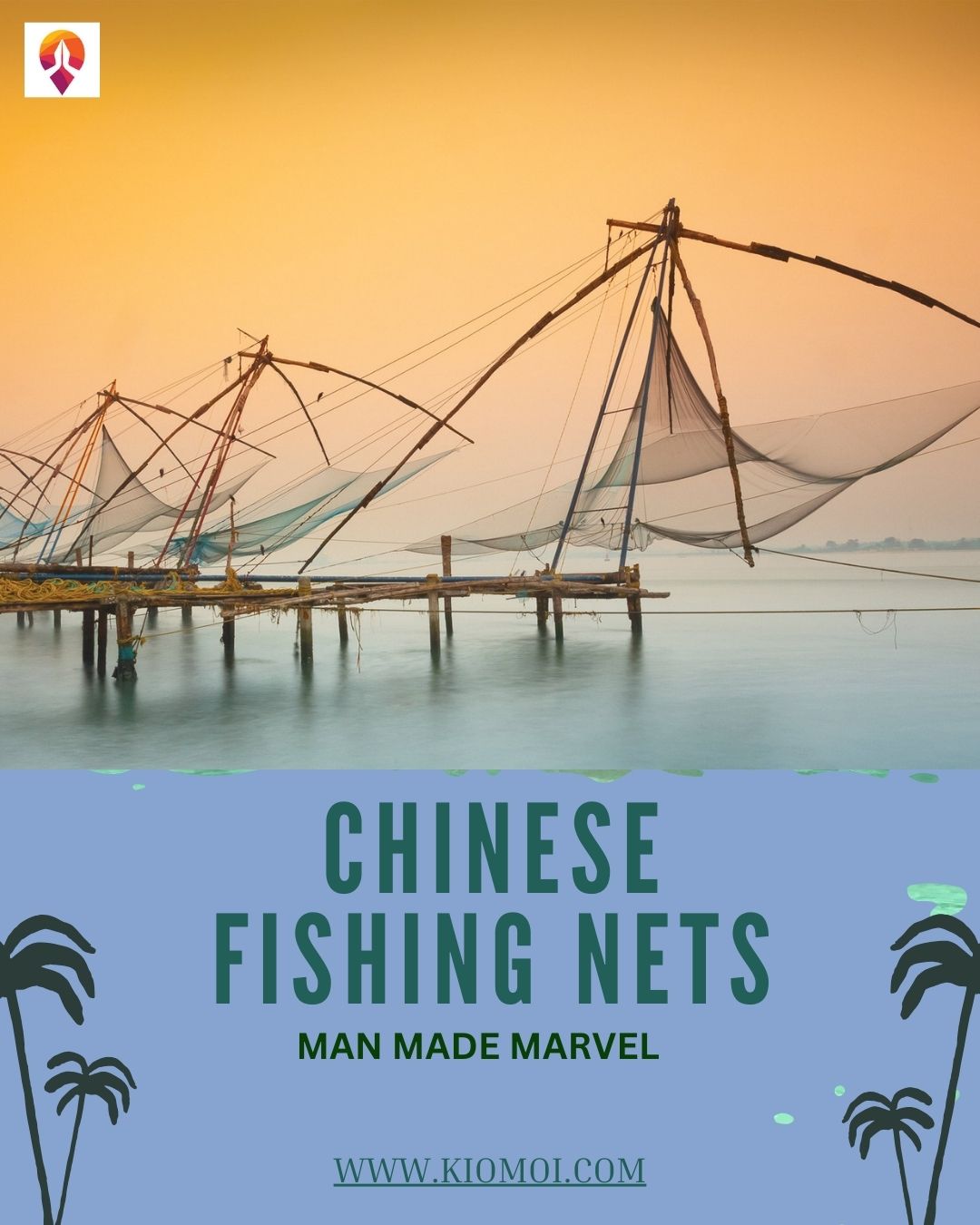
Kochi, a vibrant city in Kerala, India, is famous for its rich cultural heritage and unique blend of traditions. One of its most iconic sights is the Chinese fishing nets Kerala, known locally as “Cheena Vala.” These fascinating structures not only showcase the region’s fishing practices but also tell a story of historical trade links between China and India. This article delves into the history, significance, and experience of visiting the Chinese fishing nets in Kochi, including entry fees and visiting tips.
History of Chinese Fishing Nets Kochi
The Chinese fishing nets in Kochi are believed to have been introduced by Chinese explorer Zheng He during the 15th century. These nets are a testament to the maritime trade routes that connected India to China and other parts of the world. Initially, they were used exclusively by the local fishermen, but over time, they became a symbol of Kochi’s rich fishing heritage.
The design of these nets is unique, utilizing a cantilever mechanism that allows fishermen to operate them with minimal manpower. Made primarily of bamboo and teak, the nets are a marvel of engineering and demonstrate the ingenuity of local fishing techniques.
How Chinese Fishing Nets Work
The Chinese fishing nets are large, stationary structures that consist of a wooden frame, a net, and a system of pulleys and ropes. They are set up along the coastline, often in shallow waters. The operation is straightforward:
- Setting Up: The net is lowered into the water using a system of ropes and pulleys.
- Waiting for Catch: Once the net is submerged, fishermen wait for fish to swim into the net.
- Hauling In: After a short period, the fishermen pull on the ropes to lift the net out of the water, hoping for a good catch.
The entire process is not only functional but also visually captivating, making it a popular attraction for tourists. Visitors often gather to watch this traditional method of fishing, capturing stunning photographs of the nets silhouetted against the setting sun.
Visiting Chinese Fishing Net Kochi
Location
The Chinese fishing nets are primarily located in Fort Kochi, a historic area known for its colonial architecture and vibrant atmosphere. The nets are situated along the coastline, making them easily accessible for visitors.
Chinese Fishing Nets Entry Fee
Want to know about Chinese Fishing Nets Entry Fee?One of the best aspects of visiting the Chinese fishing nets is that there is no entry fee to observe the fishing nets themselves. However, visitors may wish to take part in a fishing experience, which may involve a small fee depending on the boat ride or fishing service offered. Additionally, if you want to enjoy a guided tour, there might be charges associated with that.
Best Time to Visit
The best time to visit the Chinese fishing nets is during the evening, when the sun sets, creating a picturesque backdrop. The atmosphere during this time is magical, with the sky painted in hues of orange and pink. Mornings can also be a good time to see the fishermen at work.
Local Cuisine
While you’re in the area, consider indulging in the local cuisine. Numerous eateries and shacks nearby serve fresh seafood, including dishes prepared with the catch from the Chinese fishing nets. Trying out local specialties like fish curry, prawn fry, and seafood biryani can be a delightful addition to your visit.
Photography Tips
The Chinese fishing nets provide excellent photography opportunities. Here are some tips for capturing the perfect shot:
- Golden Hour: Aim for the golden hour during sunrise or sunset for stunning lighting.
- Wide Angles: Use a wide-angle lens to capture the full scope of the nets against the scenic backdrop.
- Details: Don’t forget to focus on the details—the ropes, the nets, and the fishermen in action.
Cultural Significance
The Chinese fishing nets are more than just a fishing method; they are an integral part of Kochi’s cultural identity. They symbolize the fusion of different cultures, reflecting the historical trade routes that once thrived in the region. The nets have become a symbol of Kochi’s resilience and adaptability, showcasing the harmonious relationship between nature and traditional practices.
The local fishermen continue to pass down the techniques of using these nets through generations, ensuring that the legacy of the Chinese fishing nets remains alive. This tradition is not only an economic activity but also a cultural heritage that is celebrated by the community.
The Environmental Aspect
While the Chinese fishing nets are iconic, they also raise discussions about sustainable fishing practices. The fishermen in Kochi often face challenges due to overfishing and environmental changes. Many local initiatives aim to promote sustainable fishing practices, ensuring that the nets can continue to be used for generations to come.
Visitors are encouraged to engage with the local fishermen and learn about their challenges and efforts to sustain their livelihoods. This engagement adds depth to the experience, transforming a simple visit into a meaningful interaction with the local culture.
Conclusion
The Chinese fishing nets of Kochi are a captivating blend of history, culture, and tradition. They not only highlight the ingenuity of local fishing methods but also serve as a reminder of the rich maritime history that has shaped the region. With no entry fee to watch these nets in action, they offer an accessible and enriching experience for visitors.
Whether you’re a history buff, a photography enthusiast, or simply looking to enjoy the local culture, the Chinese fishing nets in Kochi are a must-see. So, make sure to include them in your itinerary when visiting this beautiful coastal town. Experience the charm of Fort Kochi, engage with local traditions, and create lasting memories against the backdrop of the mesmerizing Chinese fishing nets.







